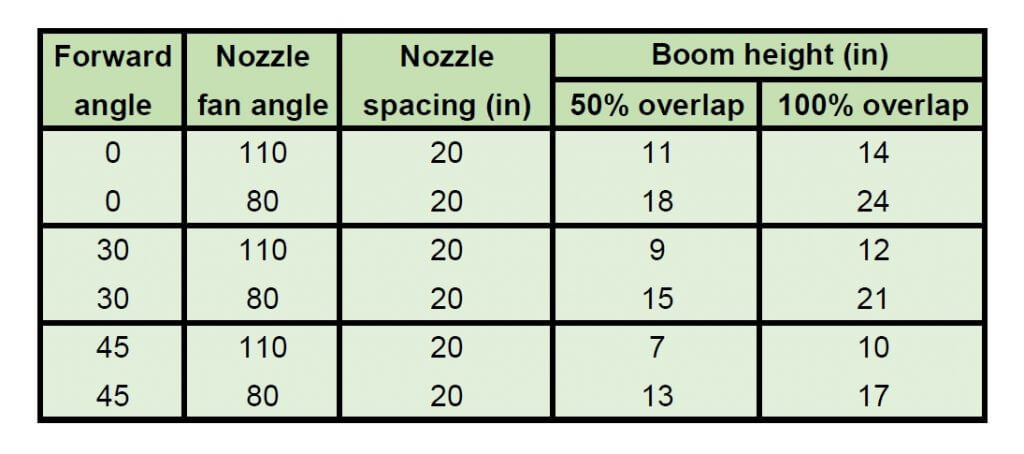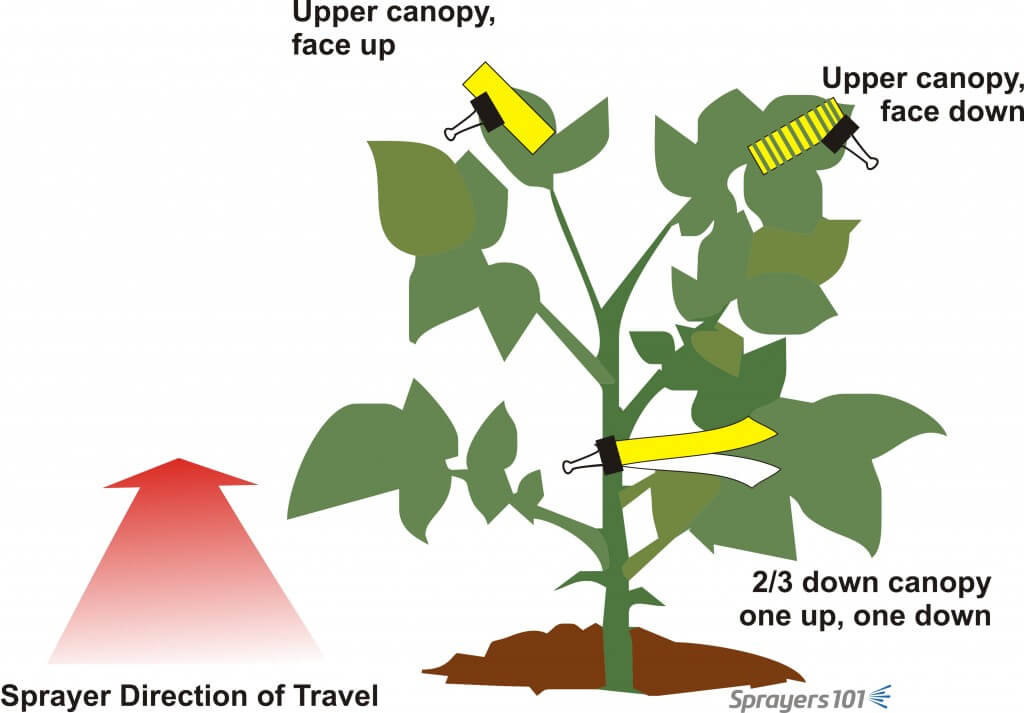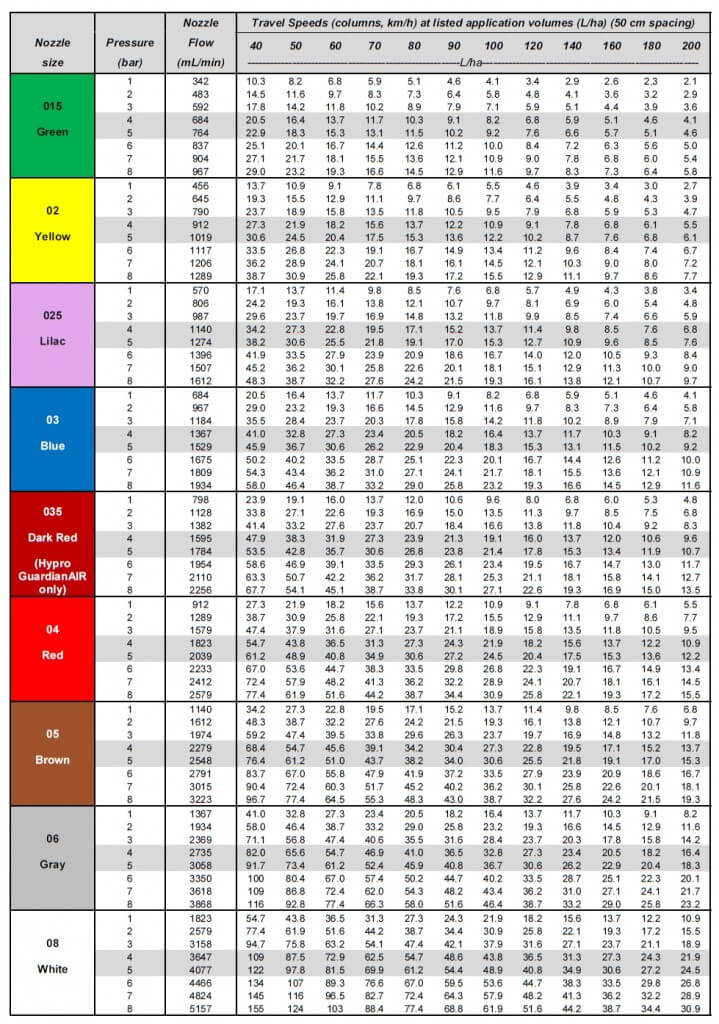
Use this spreadsheet to calculate the minimum boom heights needed for various applications. Some caution: The values are theoretical and assume the fan angles are accurate. Some nozzles don’t produce the advertised fan angle. Enter your actual angle in the spreadsheet The theory assumes that the droplets at the edge of the fan always move […]



